In today’s world of digital business, any form of business, whether large or small is vulnerable to cyber-crimes. Protect your business from cyber threats by being aware that everyone, from global businesses down to a small store owner, needs to beware because no one is immune to the tricks of these hacker gurus of the World Wide Web. But there is no need to be afraid, kindred business leaders!
This article is an informative piece, providing you with all the necessary information on how to defend your business against the menacing realm of cyber threats. Welcome to the world of cybersecurity superhero gear up your seat belt to start your training.
Cyber Threats 101: Where Are They?
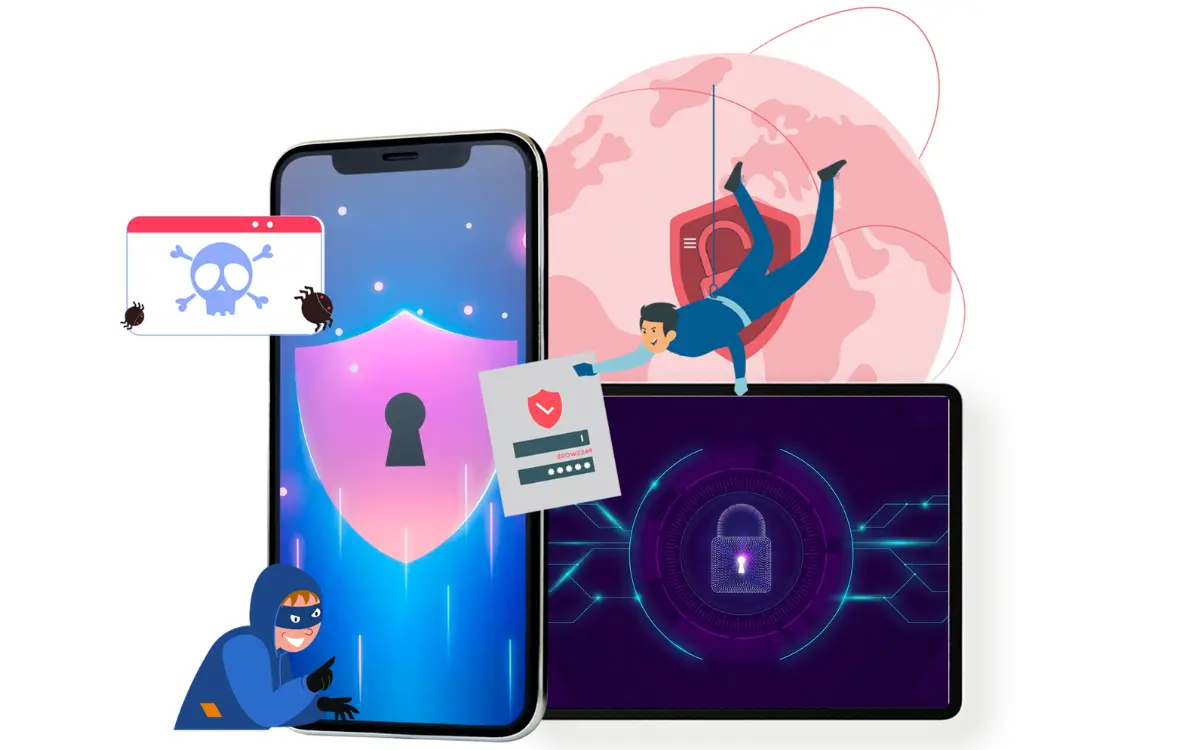
Before we dive into the world of online security for businesses, let’s take a look at some of the most common cyber threats that businesses face:
Insider Threats
Business cybersecurity must account for insider threats. It is not uncommon to find your biggest competitor lurking in your premises with your own employees as your adversary.
Another type of threat may emanate from employees or contractors dissatisfied with certain aspects of the business and may decide to cause havoc by propagating worms or viruses or releasing information illegitimately.
To protect your business from cyber threats, vigilance against insider attacks is crucial. For a detailed list of common threats, visit our page on top cybersecurity threats.
Hacker Attacks
They are similar to intruders who try to find a way to get into your home and then take your property or create havoc. It might contain security flaws, which the attackers can leverage, or attempt to crack known passwords.
Dos Attack
A DoS attack attempts to overload a site or a network reaching such degrees that servers freeze or are made inaccessible to users. It means having a virtual barrier of congestion that denies your valued customers the ability to perform their online transactions with you.
Malware Mayhem: The Malware That Threatens Your Network
Malware is a general term that is used for ‘malicious software,’ and – just as viruses come in a ‘family’ of recognition – is a family of viruses aimed at causing destruction in systems and devices. These malicious programs can and do siphon off your data, delete your files, encrypt your files to demand outrageous ransoms or enroll your machine into an army of cybercriminals’ drones. Malware is not a group of programs but a class and just like any other class, it has subclasses and each of the subclass members is unique in the manner it poses a threat.
The Malware Family Tree
Viruses: The Infectious Spreaders
Viruses are often considered the most dangerous kind of malware most people heard about and are afraid of. And how do they relate to viruses? They are similar to viruses since they are capable of infecting your computer and spreading to other files or systems in your computer, replicate themselves, and as they do, wreak more havoc.
Like organic systems, the viruses are self-replicating, and thus once they are in your computers, they can cause all sorts of havoc and are very hard to eliminate.
Worms: The Self-Replicating Terrors
If viruses are the equivalent of the flu, which requires somebody to pass on to an individual, then worms are like a more complex virus that propagates itself independently.
Viruses are programs that behave like worms, and infiltrate a system’s weak points, all while replicating and infecting one machine after another, draining the resources or the memory and seizing central processing unit time, potentially halting all networks or more.
Trojans: The Deceitful Imposters
Trojans are like the con artists of the malware world These threats are quite sophisticated and clever, which makes them that much more dangerous to have on your computer. It poses itself as something good or a program/file that the users would want to download and install into their systems.
Once they have infiltrated your system, these considerate programs are able to download its real dangerous code, which can provide a hacker full access to your device or network. The consequences that can result from the utilization of Trojans can range from identity theft and the transferring of large amounts of sensitive data integrity violation and even complete system compromise including the ability to take over system control remotely.
Ransomware: The Digital Extortionists
Ransomware is likely the most dreaded type of malware and for good reason, or otherwise, why would it receive such attention? These are criminal programs that have a veneer of sophistication: instead of your files or systems being kidnapped and held for ransom, they are seized, and encrypted until reimbursement in the form of Bitcoins is made.
Among the worst forms of cyber threats to businesses, ransomware attacks lock the businesses out of their data and may take control of essential functions until the ransom is paid or the malware is disposed of.
Spyware and Adware
Spyware and adware are the infamous ‘Peeping Toms’ of the malware world, whispering in your ear, observing your every move on the Web, and harvesting personal data as they go. Spyware including key loggers, screen loggers or capturing devices, Webcam or Mic listening devices can spy on you.
Adware, on the other hand, will continually give you notifications with advertisements or even take you to sites you do not wish to access since the rogue creators of the malware get paid when you access these sites.
Rootkits: The Stealthy Infiltrators
Rootkits are a class of malware that penetrate deeply into the operating system; they are stealthy in their operation and can hardly be detected and removed in most cases. These programs can change key operating system files, have privileged system calls, and manage to hide other malware from your anti-virus software, effectively providing the hacker with a hidden backdoor on your system or computer network.
As you now know some of the common types of cyber threats here and there exists, let us proceed to how best your business can guard against these cyber crimes!
Malware Defense Tactics: Protecting Your Digital Kingdom
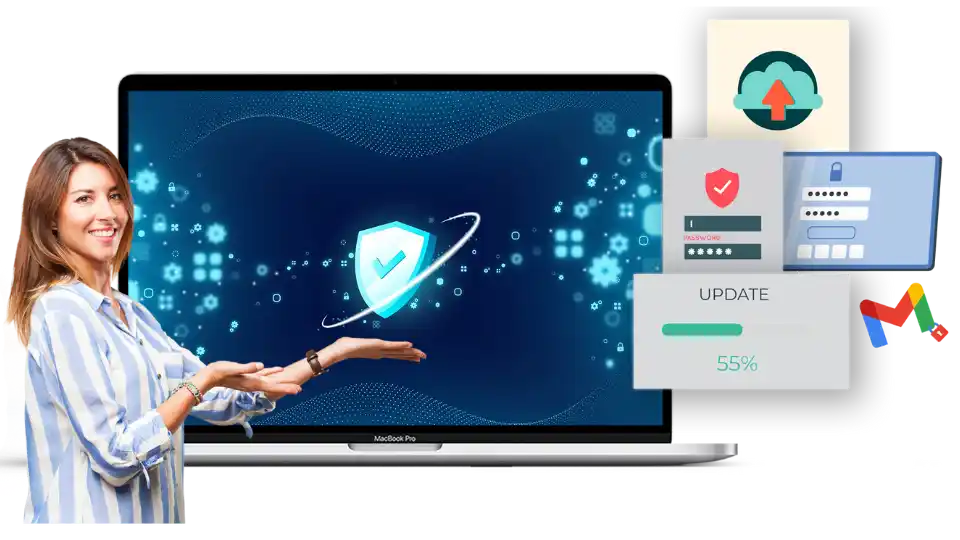
Now that you know the different types of malware out there, it’s time to learn how to protect your business from cyber threats and defend your systems and devices from these digital invaders:
-
Keep Your Software Updated
Probably the most effective measure that can be taken against malware is to make sure all utilized software programs, operating systems, and applications are latest by their security patches.
Programs and patches released for a given software contain solutions to certain security flaws that cybercriminals can capitalize on to disseminate malicious programs, meaning updating the software is paramount. This is a fundamental step in business data security and cybersecurity best practices for businesses.
-
Use Antivirus and Anti-Malware Software
Anti-virus and anti- malware solutions can be seen as the door men, door guards if you will, who are constantly on the lookout for malicious code and immediately detecting it before it can enter your premises. Ensure one is updating these security solutions and performing periodic scans to help detect such threats. This is a critical aspect of protecting your business from cyber threats.
-
Use Safe Browsing and Handling of Emails
Most of the malware invasions are initiated with a single click on a link or an attachment. When accessing the internet or emails, one should be very careful especially where the sources are unknown.
Do not download or open any files, documents or links that seem malicious and always verify the source of the link or the attachment. These precautions are part of online security for businesses.
-
Use Firewall and Access Controls
Malware cannot sneak into your network or systems in the first place if you have implemented the best firewalls and access controls. The first is the firewall which prevents connection from undesirable nodes the second is access control which allows connection only from acceptable nodes. These measures are essential for business cybersecurity and to protect your business from cyber threats.
-
Regular data backup
Although prevention is crucial, strategically backing up data and computers is also vital in case the malicious software penetrates the employer’s defense. It is recommended to schedule critical data and programs’ backup to be able to restore your system after a malware attack with limited losses.
-
Educate Your Employees
Companies greatly underestimate the threat of their employees to organizational cyber security, which is why security awareness training should be provided as frequently as possible. Encourage them to identify dangerous kinds of software, phishing letters, and other threats, and name-check safe computer usage. Small business cybersecurity tips should always include comprehensive employee education.
There are numerous ways that these digital invaders can compromise your business, however, by using a layered defense system and being on high alert for new strains of malware, your business can effectively thwart these malicious threats and keep your systems and information secure.
Just as I mentioned earlier, malware comes in all forms, and it is up to the owners to ensure that they are updated on the latest threats in the market as well as the small business cybersecurity tips and practices to avoid falling victim to the marauding threats.
The Phishing Emails That Looks Like Real Deals

- Lightning-fast speeds to browse without lag
- Servers in 105+ countries around the globe
- Military-grade security to stay safe online
- Try it risk-free with its money-back guarantee
- Native apps for all major devices
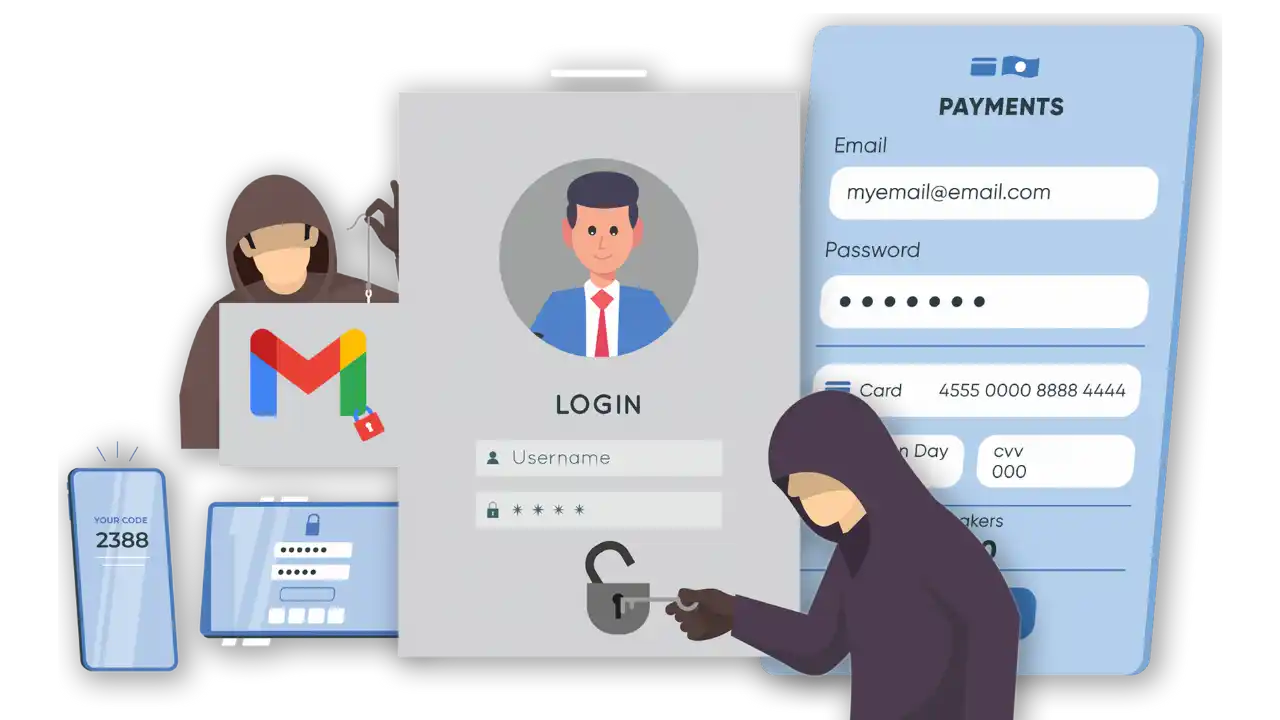
Phishing is a form of attack on Internet practitioners whereby the bad people on this new frontier attempt to lure the users into revealing confidential details, often in the form of passwords or bank details. This is done through creating email attachments that look like something they are not or creating websites that appear to be real.
The Bait and Hook
That is when these darn emails look like baits in an attempt to lure you into them. They can mask themselves under many guises; they can pretend to be calling from your bank, or a shop you do business with; telling you there is a problem with your account or that they need you to verify some details. Usually, it will be a link that you need to click on or they will directly ask you to reply to the mail with your information.
But wait! It is all pretentious – a trap! If you do that and click that link or put in your information then oh boy you have been caught on a Fishing Hook Tartare. Criminals currently possess your personal belongings, and they will not hesitate to empty your bank accounts or take your identity.
The Sneaky Tricks
Oh, the phishers are really sly and clever with their scams. At some point, they appear almost like official emails with correct company emblems and logos included. Or they might use a name that is very similar to the site with slight modifications such as using a different letter.
They also like to make you feel scared or pressured by coming up with statements such as “Get a hold of me within the next 24 hours or else your account will be closed”. This will force you to do what they want without really giving it a second thought.
What makes an Email Suspicious?
However, you can unlearn all these and know how to discern the phishing emails. Look out for:
- Undesirable emails come through with weird addresses even if it includes the name of your company.
- Fails to produce high-quality work with many spelling/grammar mistakes
- Reasons to go to war or incite the need for fear to be present for no apparent reason
- Non-descriptive links wherein you can tell that something is a link but when you mouse over it, it does not appear like a normal link.
Always Remember
If an email looks even a little bit suspicious, don’t ever click on a link, and don’t reply with any information. As for the email, you can set a rule that anyone requesting payment has to reply with the company’s phone number, and you can call or go to their official website or app to check if it is from them.
Staying Safe from Phishing
The only way to prevent yourself from getting hooked is to be very, very careful with emails and websites claiming to be asking for personal things. Never ever believe anything, however slightly questionable it may appear to your instinct.
And never, I repeat, never should you disclose your password or banking details no matter the claim they are making about being you. Business data security is paramount in protecting your operations.
Be wary of people, verify everything you are told or advised you and you will avoid getting hooked to the fishy people.
Cybersecurity Best Practices for Businesses: Strengthening Your Barrier
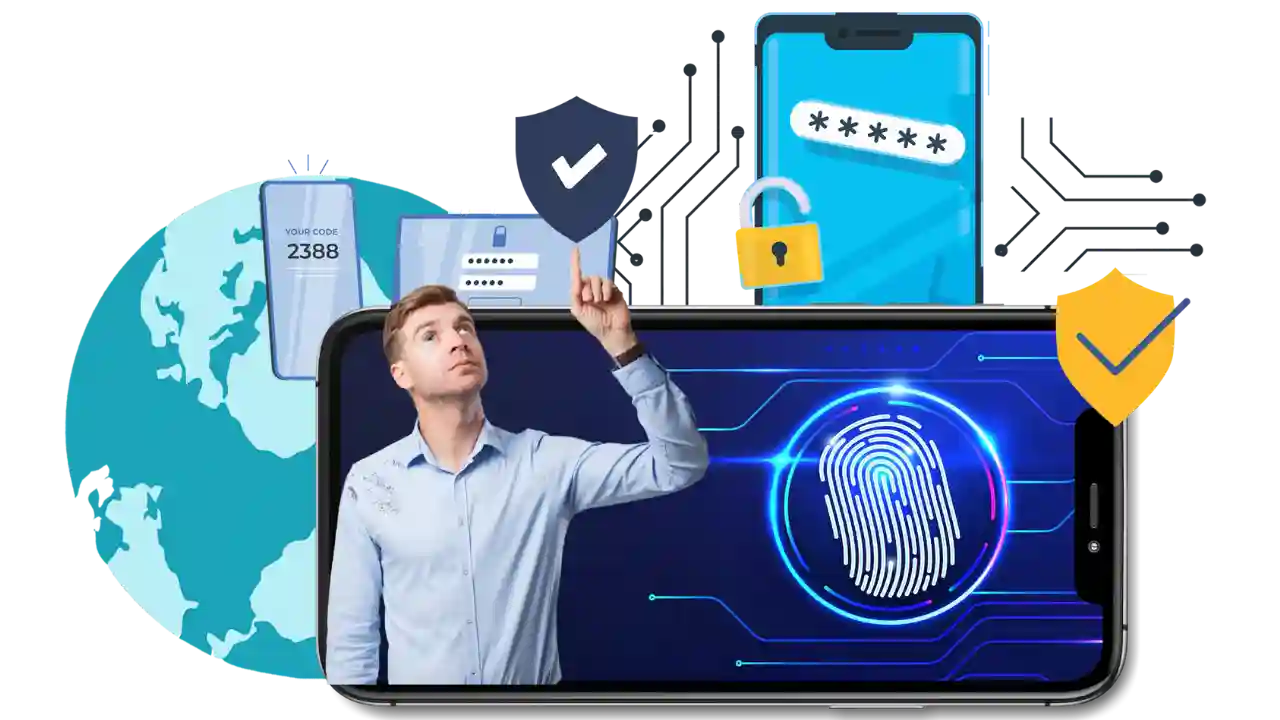
A business is like a castle: if it is to defend itself from the intruder, there must be walls and a moat to withstand the attack of the enemies of cyberspace. Here are some essential steps you can take to protect your business from cyber threats:
-
Upgrade your Ultimate Protection
As we discussed above, another key area within which one of the most crucial measures that should be taken by a business person is to ensure that all the software programs, as well as all the systems used in a business establishment, are updated with the most recent security patch as well as update. These updates are best remembered as computer knights in a digital castle, always existing to fend off the newer threats.
-
Use Strong Passwords (and Password Managers)
With weak passwords, one is as good as leaving the door to their castle open for the cyber criminals to walk straight in. Ensure that all the passwords that you use are strong, unique, and cannot easily be guessed. This way, get a password manager that will generate more enhanced and safer passwords for you.
-
Implement Multi-Factor Authentication (MFA)
The multi-factor authentication (MFA) doubles up the layers of security, and the sound of a password alone without approving the authentication process is impossible. It is doughnut to get to the door of the castle there is a drawbridge and a moat to pass!!!
-
Don’t Let Data Disappear!
Even if you are very careful and your defenses are impenetrable, it is still possible to be targeted and have an attack pass through to your network. That is why you need to make a rule to back up necessary information from time to time and know what to do if the data will be lost. You can consider it your secret devising plan in case your fortification is taken by the forces.
-
Antivirus because you are an AntiHacker
Antivirus, firewall and VPNs are like your knights and archers who are always on the lookout for invaders or intending intruders of your fortress. It is important that the basic tools are installed and regularly updated.
-
Protect Your Network as well as Your Machines
Devices and the network form the gates and walls of your castle for cyber security. Just ensure they are well protected using encrypted connections, and restricted accessibility among others to ensure that unauthorized entities may not have easy access to them.
-
Consider Cyber Insurance
Cyber insurance is not a complete solution for a business’s cyber security plan, but it is another layer of protection in case one’s defenses are compromised. You always have a backup castle you run to in case the original plan goes south.
Cyber Security Showdown: Battle Of The Defenses
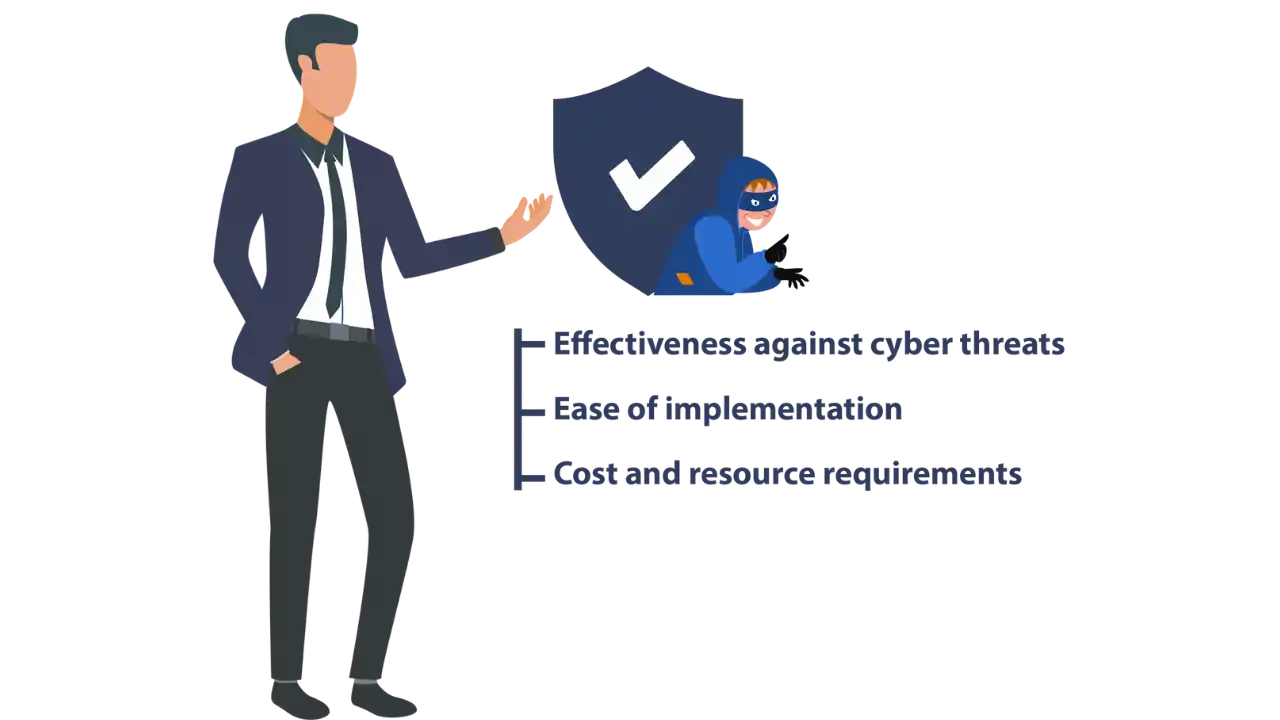
Now that you know the basics of cyber security, let’s pit some of the most common defenses against each other and see which ones come out on top! In this epic battle, we’ll consider three key factors:
- Effectiveness against cyber threats
- Ease of implementation
- Cost and resource requirements
Get ready for the ultimate cyber security showdown!
You will notice from the chart that basic measures such as the use of passwords, authentication techniques, education of employees rank very high in both efficiency and the simplicity with which they can be deployed, therefore, making them crucial for any organization’s cyber defense.
Whereas general security policies cost less in terms of staffing and budget, services such as cyber insurance and security teams cost more but are effective at safeguarding high risk businesses or valuable information.
Cyber Security Defenses Rundown
| Protection | Effectiveness | Implementation Ease | Cost |
|---|---|---|---|
| Strong Passwords | |||
| Multi-Factor Authentication | |||
| Employee Education | |||
| Cyber Insurance | |||
| Dedicated Security Team |
To Remember
- Multi-layered approach combining multiple defenses is ideal
- Make choices based on your risk profile and data sensitivity
- Strong passwords and MFA are must-haves for all organizations
- Employee education ROI is very high if done effectively
- Advanced layers like insurance and teams are great force-multipliers
The key takeaway? A multi-layered approach that combines various defenses is the best way to build a strong cyber security castle that can withstand even the most cunning cyber attacks.

Uninterrupted, high-speed browsing, zero logs so your online activity is always private.
Over 7000 people checked out NordVPN in the last month
Cyber Security In Action: Real-Life Battle Stories
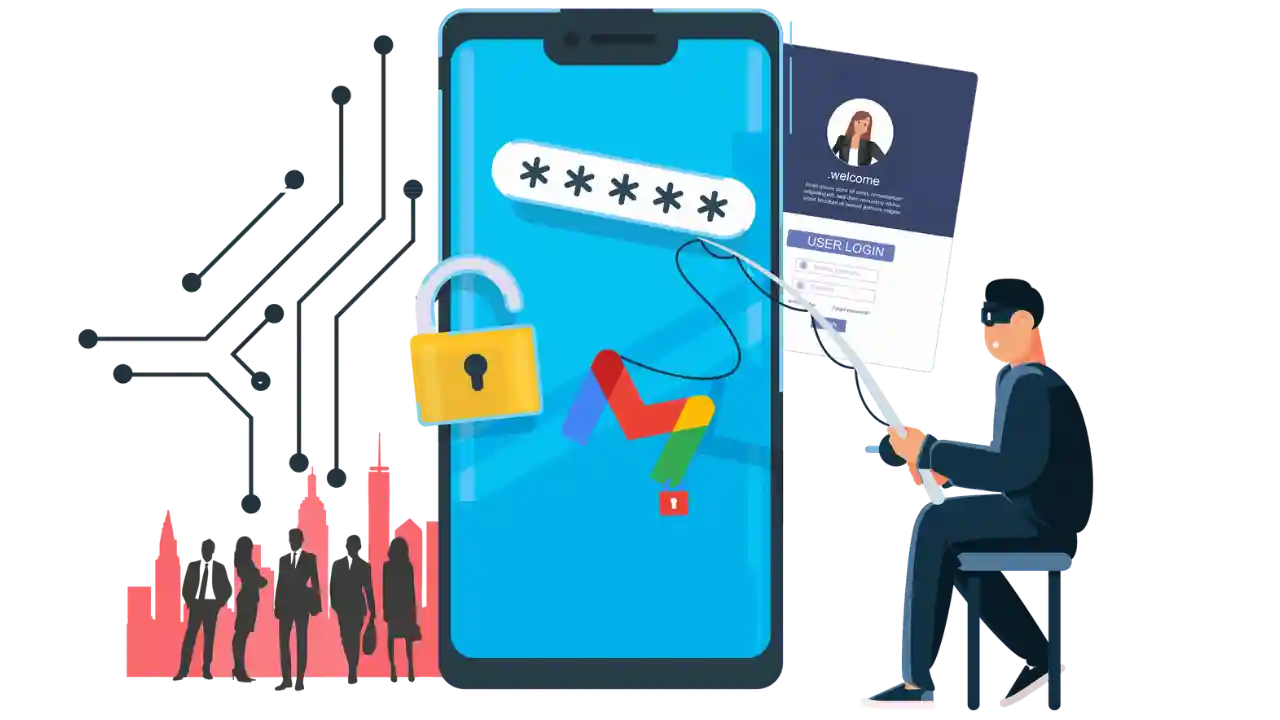
But enough theory! Let’s dive into some real-life examples of businesses that faced off against cyber threats and see how they fared:
1. The Phishing Fight
A small accounting firm has recently fallen victim of an email phishing attack; a client’s email requested financial data. Fortunately, the employees had gone through security awareness in the previous weeks and therefore identified this as a phishing scam. They immediately forwarded the email to their IT guys who then neutralised the threat before any loss had occurred.
Victory: Safe Online: The Accidental World Map and the Empire of Business 1 Cyber Threat 0
2. The Ransomware Rumble
An example was a manufacturing company that recently was under a ransomware attack that went ahead and encrypted the firm’s key production data and systems.
Due to the reliability of their backup and recovery strategy, they managed to recover their systems from the most recent backups, thus reducing the system’s downtime and data loss. Even though they had to workout a small amount of some Rands to recover the encrypted data set, their timely response and planning eased the repercussions.
Victory: Business 1, Cyber Threat 1 ( but the business lost insignificant structures/machines)
3. The Insider Insurrection
An employee dismissed from his job at a startup technological firm with top secret information about the company strip the competitor naked of all important information they desired.
But this was followed by the unauthorized access and later the exfiltration of data and although the company was heavily compromised, it had put measures such as access control and monitoring that helped in early detection of the threat. subsequently, they were able to limit the spread of the breach, find out who was responsible for such an action and work with the legal avenues to deal with the problem.
Victory: Cyber threat 1 Business 2
The advents shown here are clearly representative of the necessity for an appropriate cyber security plan in place and the constant threat that any modern business will face in the battle against cyber criminals.
Cyber Security Checklist: Your Path to Digital Protection
Time for the perfect protection for your business against cyber threats? Here’s a handy cyber security checklist to get you started:
- Any business, large or small, should analyze its exposure to risks and threats rooted in cybercrime.
- Use of passwords with high complexity as well as enforcing the use of passwords on password managers.
- Specifically, when implementing multi-factor authentication it should be essential to do for all important systems and accounts.
- Ensure all software, operating systems, and applications that are used are up to date with the latest patches that address the security vulnerabilities.
- Use up-to-date antivirus, anti-malware, and firewalls to alert you about any malicious attempt to infiltrate the system.
- Another step is to employ security measures such as access controls and the principle of least privilege to systems and data
- Make sure your critical data is backed up and practice the backup and recovery regimen frequently.
- Explain the company’s security policies and practices to users and other members of the organization.
- Provide mandatory security awareness training for all personnel at least once a year, covering possible threats such as phishing and social engineering attacks.
- It may be necessary to extend the security range to the choice of more specific security measures, such as encryption, intrusion detection and prevention systems, and security information and event management systems (SIEM).
- Control the damage by developing an incident response plan and making sure all employees are informed of their responsibilities on the subject.
- Recommend or consider whether or not to acquire cyber insurance or another approach to risk transfer.
- Ensure that your cyberspace is checked fondly and strongly and that you are regularly updating them by assessing the potential threats and changes within the business.
At this point you should be confident in constructing your very own cyber-space strongholds – with this checklist and attitude to cyber-security by your side, nothing should be able to penetrate your fortress.
Cyber Security Myths: Where Myth and Reality Intersect
This article explains the ten myths of cyber security that may have?) given businesses the wrong idea in the tech world. Let’s debunk some of the most common ones:
Myth: Some of the misconceptions include: ‘I am not a big company and hence hackers cannot bother with me’ or ‘My company is too small for me to bother putting up a defense’.
Fact: In the piece, the author points out that cyber criminals do not differentiate between big or small organizations since they are looking for networks that contain data or have an online presence that they can exploit. However, small businesses become more vulnerable and attractive to such criminals due to the lack of resources or proper security measures they possess.
Myth: Some common concerns include: “Cyber security is too costly and complex for my business. ”
Fact: It is also noteworthy that while the search for inspiration and advanced security can affect the demand and cost significantly, many of the fundamentals of cyber security such as strong passwords, trained employees, and software updates may not require huge investments and can be free. That’s why it is important to invest in cyber security of it because it’s a serious issue and your business and your stock can be stolen.
Myth: People with such attitude are: “My antivirus software is enough to protect my business from cyber threats. ”
Fact: All in all, antivirus software is indeed a significant part of cyber security but should not be used to assume that one is protected. Enhanced system security measures that should be implemented include firewalls, and access control, and employees should also be taught how to protect personal devices connected to the firm’s network.
Myth: “Cyber attacks are only restricted to particular industries of commerce and their organizations. ”
Fact: The occupation of cyber threats does not spare any industry or business entity, no matter the size. Cybercriminals are not selective and will attack a company they consider susceptible to a cyberattack, irrespective of the industry or its specialization.
Myth: “This is another shocking comment that many people come up with and say once I implement cyber security measures I am safe forever. ”
Fact: There is a wide range of threats in cyberspace, and they are all developing constantly, so it is important to be prepared. In fact, information technology security is a continuous process that includes constant updates, surveillance and changes due to the discovery of new threats and weak points.
Once you are able to distinguish the true predictions from the misconceptions of the two videos, you will be in a better position to make rational decisions for the cyber security of your business and ward off the pitfalls that lie in front of a company.
Frequently Asked Questions
Can I avoid cyber security for my business? I have a small business, why do I need the solution?
Absolutely! Cybercriminals do not distinguish between a small business and a big company they need data and presence online. Moreover, sophisticated crackers prefer attacking small businesses since they are perceptive to the dearth of capital, staff, and personnel security programs.
How much does it cost to implement cyber security measures?
The cost heavily depends on the scale of your business, its industry, and its requirements – insurance may be cheap for huge corporations and expensive for small businesses that are situated in industries with a high-risk rating.
However, there are numerous basic cyber security activities such as passcodes, training among employees regarding cyber security awareness, and installation of updates, among others which are cheap or even free. Sophisticated protection can be still more cost but provides an extra layer of security, such as a special safety team and cyber insurance.
How can I prevent my business from getting a cyber attack?
Lastly, act fast in order to solve the breach and prevent extensive harm. Isolate the infected systems, enact your business continuity management plan, and involve your IT and/or cyber security department if the options are not immediately available. In any case, ensure that you write everything down and follow the procedure of reporting the accident.
How often should I reconsider my cyber security defense?
Cyber threats come in various forms and are not limited to any one form; this means that whatever security measures you put in place must also evolve. Ideally, you should revisit your plan and adapt it depending on changes to your company, infrastructure, or types of threats annually at the minimum.
Am I legally responsible if my business loses sensitive customer data?
Yes, there are legal and financial penalties that businesses fear can happen due to data breaches particularly if the business did not follow the standard basic security measures or when it violated data protection laws. This is why it is necessary to have at least a proactive cybersecurity policy aimed at preserving your company and consumers.
The Bottom Line
Congratulations, brave business owner! You have now successfully completed this course, which takes you through the dangerous currents of cyber threats and fundamental ways of safeguarding your cyber sphere. But, do not forget that one is always at war with these hackers as it can be known as a war that lasts forever where one is always on the lookout for the other.
As you embark on your cyber security journey, keep these key takeaways in mind:
- Cyber threats exist and are dangerous for companies and business organizations of any size.
- It is advised to use multiple layers and include different types of security measures in order to create an effective defense against cyber threats.
- Cybersecurity and protection of the employees’ data is part of the business fundamental requirements of any business organization.
- Security in the digital environment is a perpetual project that demands consistent revisiting, upgrading, and guarding against new forms of risks.
- Cyber security investment is a long-term investment of an organization as it is a way of shielding your business from losses and thus is very important.
Please always bear in mind that you are not the only person who is facing all these. Get professional advice, be informed of threats and safe practices, and make cyber security an organizational culture and responsibility.
With the right mental set in regard to approach, plan, and weaponry you have a chance of putting your business on the cyber security equivalent of a castle with walls impregnable to the most crafty hackers to come forth.
So, be cautious, be timely, and triumph over the evils that dare to dare your internet space!






